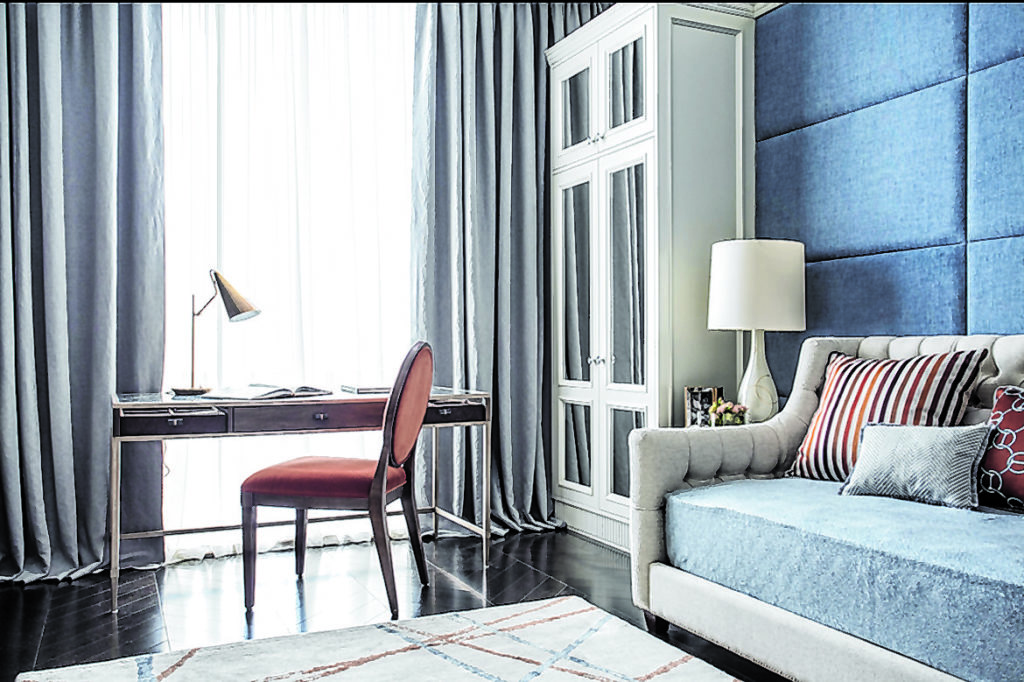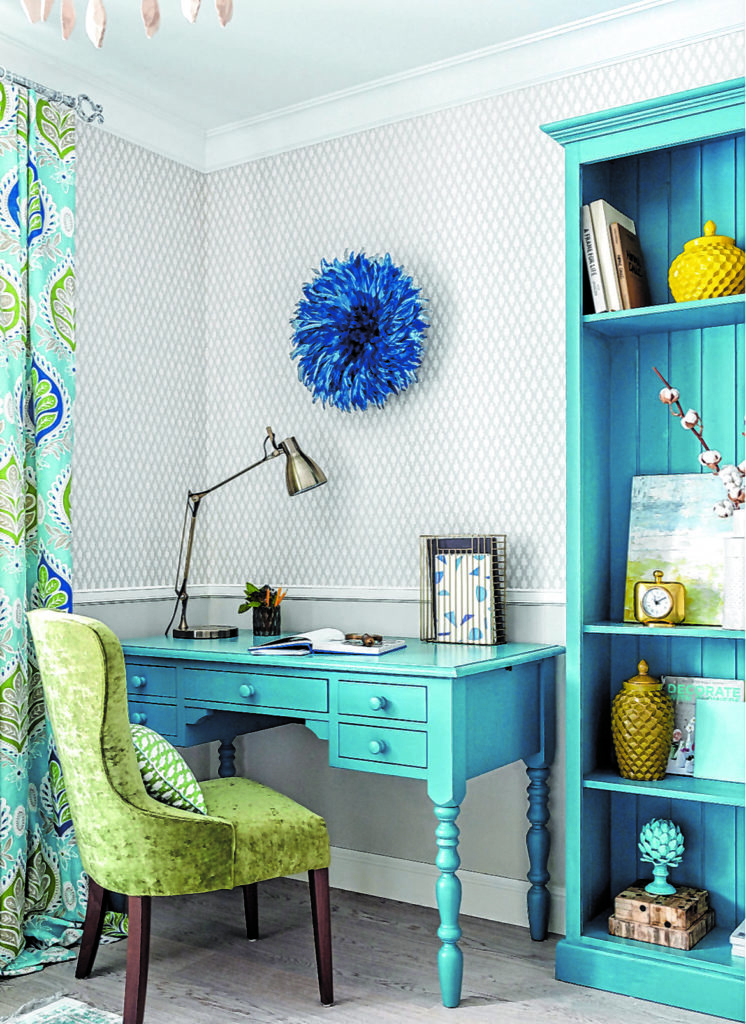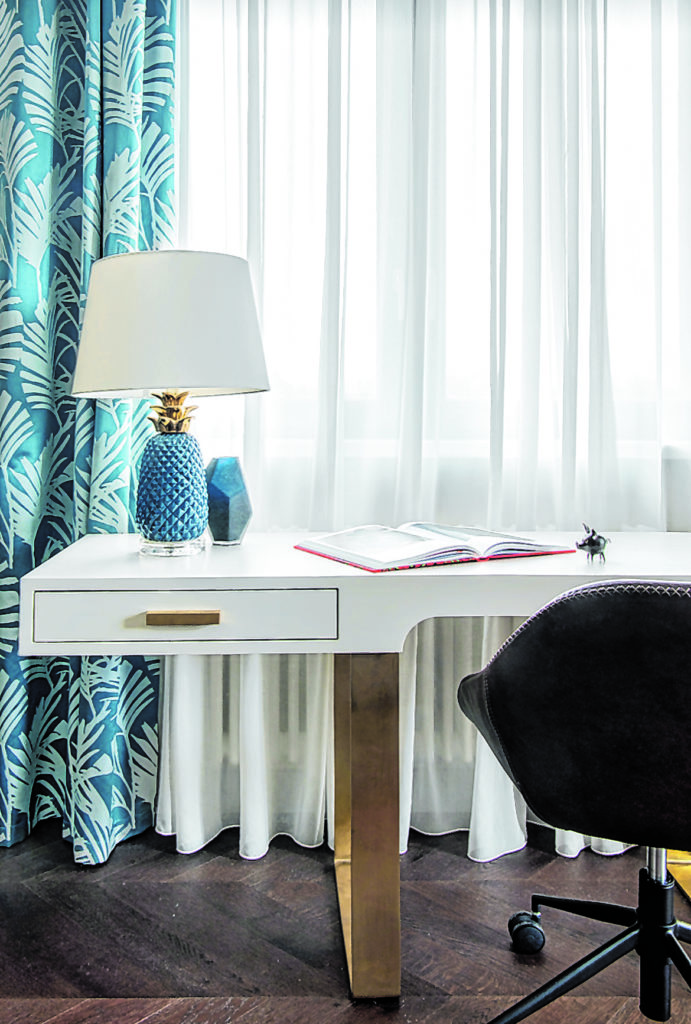By Tania Kapoor
The way we live and work changed unexpectedly last year. And while we are enjoying more freedom of movement and may even have been able to take a trip to our favorite vacation destination, our lives are still very much affected by the global pandemic. This September, some people will go back to their corporate offices full-time but many more will likely choose a hybrid environment of splitting their work lives between the office and home.
Working from home is not a new concept or a modern luxury. The home office originated in ancient Greece where a chair and a table would be set up in the corner of a room at home and used as working space. Later, the Romans established the concept of public and administrative office space and coined the word “officium” where the modern word for office originates from. In the Middle Ages and during the Renaissance, hybrid work-home spaces were increasingly popular as craftsmen and merchants set up store fronts and had personal living space at the back of their houses. The public office space did not come back to popularity until the Industrial Revolution, and the 20th century ushered in the idea of the modern office space, requiring work be done outside the home and doing a daily commute.
With many people continuing to take advantage of work-from-home options, there is an increased need for practical and organized home office space.
 Location, Location, Location
Location, Location, Location
One of the most important things to consider when setting up a home office is its location. Comfort comes in many shapes and forms. Where your office is located is going to affect not only your productivity but the family dynamics. If you can set up a home office in a separate room, that’s ideal. But not everyone has that option. Choose the quietest part of your house, whether that is the living room, family room, guest room, and sometimes even the bedroom. Stay away from doors and heavy trafficked areas. Use the space you have wisely. Look around. Do you see the large chair in the corner of your living room and you don’t remember when was the last time you sat in it? Move it and use that corner to set up a workspace.
We do not want to be reminded of our workday when we sit down at the end of the day with family to relax and have dinner. One way to avoid that is to try and set up the home office in a way that it blends in with the rest of the room. If possible, avoid having the workspace take central stage in the room. A quiet corner of the living room will do. Try to have the desk mimic the style and color of the rest of the furniture in the room. Keep the workspace clean and organized. Nothing screams work and office more than a bundle of cables dangling from a home computer. Invest in a wireless mouse and screen.
Keep It Simple
Try not to over decorate. You may be tempted to recreate the beautifully styled home offices that you see on Pinterest. There are the desks with flower arrangements and tons of books, the inspirational quotes and family photos. But it is just that, a beautifully styled desk but likely not a practical workspace. Keep your workspace simple, clean and organized, especially if your desk is in one of the main living spaces. Ideally, use a desk with drawers where you can store all pens, pencils and Post-It notes. Focus more on streamlining your workspace rather than on the décor.
 Bring Life to The Walls
Bring Life to The Walls
Those inspirational quotes and family pictures can still be around you. Hang them on the wall above your desk. Floating shelves are a great way not only to use to store office items but also serve as display space. They also help define your workspace and break up the space around it. If you are concerned with damaging the walls when hanging your pictures, you can use adhesive strips, magnetic paint or wire displays.
 Let The Light In
Let The Light In
Quiet and calm are important for a productive day in the home office. So is light. Natural light brings an elevated mood and more energy to your work. If possible, situate your desk next to a window. Open the curtains and roll up the shades. Use task lights and adjustable desk lights to compensate for lack of natural light or work in the evening. Most of our home offices have limited space so wisely choose your light fixture. If your space isn’t big or close to a window, bring in a mirror to reflect available light to your workspace.
The home office should, above all, be a comfortable space where you feel inspired, productive and motivated. If you haven’t created this special place yet, it is never too late to do so now.
 Tania Kapoor is a Manhasset-based interior designer and owner of OGAN DÉCOR, LLC.
Tania Kapoor is a Manhasset-based interior designer and owner of OGAN DÉCOR, LLC.


















